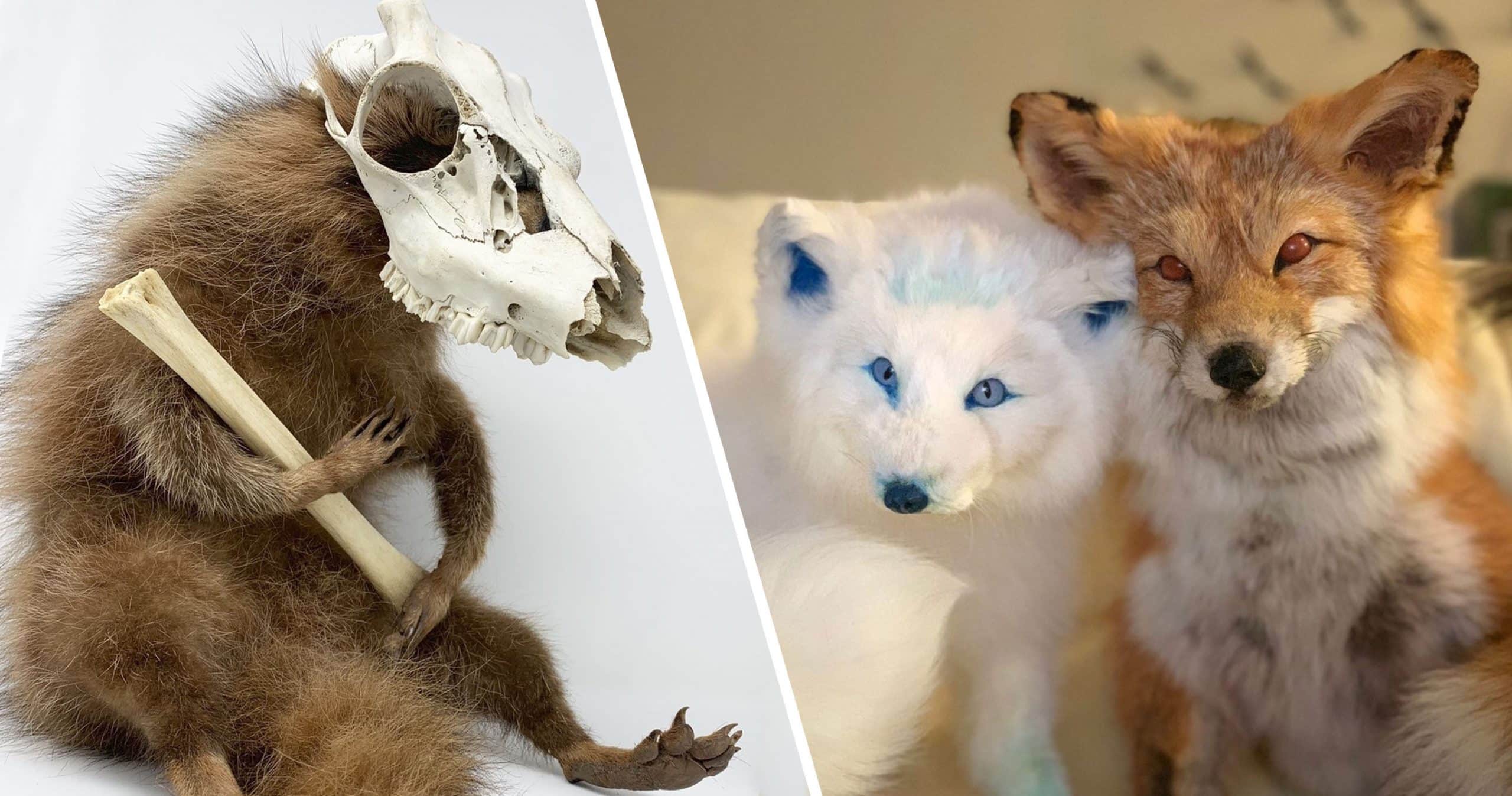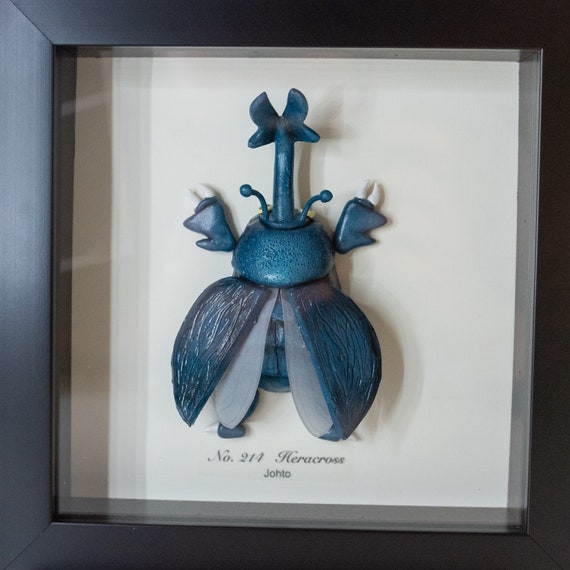Level Up Your Collection: Exploring The World Of Taxidermy Pokemon
Alright, let’s dive straight into it. Taxidermy Pokemon is one of those quirky fandom trends that has sparked both fascination and debate among fans worldwide. Imagine this—your favorite pocket monster, perfectly preserved in a lifelike form, sitting proudly on your shelf. Sounds wild, right? But trust me, this niche hobby is blowing up, and there's a lot more to it than meets the eye. Whether you're a die-hard Pokemon trainer or just curious about the world of taxidermy, this article will give you all the deets you need. So, buckle up!
Taxidermy Pokemon might sound like a stretch for some, but it’s not as out-there as it seems. Fans have been experimenting with various forms of artistic expression to bring their beloved creatures to life in new ways. From plushies to sculptures, there’s a whole universe of creativity surrounding these mythical beasts. But when it comes to taxidermy, things get a little more intense—and way cooler, if you ask me. This trend isn’t just about preserving animals; it’s about reimagining the fantastical world of Pokemon in a whole new light.
Now, before we dive deeper, let’s clear the air. Taxidermy Pokemon doesn’t involve real animals, so don’t panic. Instead, it’s all about creating hyper-realistic models that mimic the look and feel of the original creatures. Think of it as a fusion of art, science, and fandom. And guess what? It’s not just for collectors anymore. It’s becoming a legitimate art form that’s gaining traction in the creative world. So, whether you’re here to learn, create, or just geek out, you’re in the right place.
Read also:Unveiling Abby Storer A Rising Star In The Spotlight
What Exactly is Taxidermy Pokemon?
Let’s break it down. Taxidermy Pokemon refers to the process of creating life-like replicas of Pokemon using various materials. These replicas can range from simple foam models to intricate silicone creations that look almost lifelike. The goal is to capture the essence of each Pokemon, from their signature moves to their unique characteristics. It’s not just about making a statue; it’s about bringing these creatures to life in a way that feels authentic and true to their original design.
Why is Taxidermy Pokemon So Popular?
There are a few reasons why this trend is taking off. First, it appeals to hardcore fans who want to take their collection to the next level. Second, it’s a form of artistic expression that allows creators to showcase their skills and creativity. And third, it’s just plain cool. Who wouldn’t want a Pikachu or Charizard that looks like it just stepped out of the game?
Here’s the kicker: taxidermy Pokemon isn’t just about aesthetics. It’s also about storytelling. Each piece tells a unique story about the Pokemon it represents. Whether it’s a Bulbasaur in full bloom or a Lapras swimming gracefully, these creations capture the imagination and bring the world of Pokemon to life in a way that’s both mesmerizing and immersive.
The Art Behind Taxidermy Pokemon
Creating a taxidermy Pokemon is no small feat. It requires a combination of artistic talent, technical skill, and a deep understanding of the subject matter. Artists use a variety of materials, including foam, silicone, resin, and even 3D printing, to bring their creations to life. The process involves sculpting, painting, and detailing each piece to ensure it looks as realistic as possible.
Materials Used in Taxidermy Pokemon
Let’s talk materials. Foam is often used as the base for these creations because it’s lightweight and easy to shape. Silicone is another popular choice because it provides a more lifelike texture and can be molded to perfection. Resin is used for harder parts, like horns or claws, while 3D printing is becoming increasingly popular for creating intricate details.
- Foam: Lightweight and easy to sculpt
- Silicone: Lifelike texture and flexibility
- Resin: Durable and perfect for hard parts
- 3D Printing: Ideal for intricate details
The Process of Creating Taxidermy Pokemon
Creating a taxidermy Pokemon is a multi-step process that requires patience and precision. It starts with designing the base structure, followed by sculpting, painting, and detailing. Each step is crucial to achieving the final result, and artists often spend weeks—or even months—perfecting their creations.
Read also:Ava Louise Images The Ultimate Guide To Discovering Her Alluring Visuals
Step-by-Step Guide to Taxidermy Pokemon
Here’s a quick rundown of the process:
- Design the base structure using foam or a 3D model
- Sculpt the details using clay or silicone
- Paint the piece to match the original design
- Add final touches, such as fur, scales, or other textures
Each step requires a different set of skills, and artists often specialize in one or two areas. For example, some artists focus on sculpting, while others excel at painting and detailing. It’s a collaborative effort that brings the best out of everyone involved.
The History of Taxidermy and Its Connection to Pokemon
Taxidermy has been around for centuries, but its connection to Pokemon is relatively new. Traditional taxidermy involves preserving real animals, but taxidermy Pokemon takes a different approach. Instead of using real creatures, artists create replicas that mimic the look and feel of the original designs. This allows them to push the boundaries of creativity without harming any animals in the process.
How Taxidermy Evolved into Art
Over time, taxidermy has evolved from a practical skill into a legitimate art form. Artists are now using it to create everything from mythical creatures to pop culture icons. Pokemon, with its rich history and diverse cast of characters, was a natural fit for this trend. Fans were quick to embrace it, and before long, taxidermy Pokemon became a staple in the fandom.
It’s worth noting that this trend isn’t just about nostalgia. It’s about reimagining the world of Pokemon in a way that feels fresh and exciting. Whether you’re a long-time fan or a newcomer to the scene, there’s something for everyone in the world of taxidermy Pokemon.
The Ethics of Taxidermy Pokemon
One of the biggest concerns people have about taxidermy is the ethical implications. However, taxidermy Pokemon is completely cruelty-free. Artists use synthetic materials to create their pieces, ensuring that no animals are harmed in the process. This makes it a great option for fans who want to celebrate their love for Pokemon without compromising their values.
Why Synthetic Materials Matter
Synthetic materials are key to making taxidermy Pokemon ethical and sustainable. They allow artists to create lifelike replicas without harming any living creatures. Plus, they’re often more durable and easier to work with than traditional materials. It’s a win-win for everyone involved.
But it’s not just about ethics. Synthetic materials also give artists more freedom to experiment with their designs. They can create pieces that are larger, more detailed, or more intricate than ever before. This has opened up new possibilities for the art form and allowed it to evolve in exciting ways.
The Cost of Taxidermy Pokemon
Now, let’s talk money. Taxidermy Pokemon can be expensive, depending on the level of detail and the materials used. A basic piece might cost a few hundred dollars, while a more elaborate creation could run into the thousands. It’s not a cheap hobby, but for many fans, it’s worth the investment.
Factors That Affect Pricing
Several factors influence the cost of taxidermy Pokemon, including:
- The size and complexity of the piece
- The materials used
- The artist’s experience and reputation
- The level of detail and customization
It’s important to note that prices can vary widely depending on the artist and the project. Some artists offer affordable options for beginners, while others focus on high-end pieces for serious collectors. It’s all about finding the right fit for your budget and your goals.
Where to Buy Taxidermy Pokemon
If you’re interested in adding a taxidermy Pokemon to your collection, there are several places you can look. Online marketplaces like Etsy and eBay are great options for finding unique pieces, while specialized shops and conventions offer a more curated selection. It’s also worth checking out social media platforms like Instagram, where many artists showcase their work.
Tips for Buying Taxidermy Pokemon
Here are a few tips to keep in mind when shopping for taxidermy Pokemon:
- Do your research and read reviews before making a purchase
- Ask for photos or videos of the piece in progress
- Check the artist’s credentials and experience
- Make sure the materials used are synthetic and cruelty-free
Buying taxidermy Pokemon can be a rewarding experience, but it’s important to do your due diligence. With so many options available, it’s easy to find a piece that fits your style and budget.
DIY Taxidermy Pokemon
For those who want to get their hands dirty, DIY taxidermy Pokemon is a great option. There are plenty of tutorials and resources available online to help you get started. From basic foam sculptures to advanced silicone creations, there’s something for everyone in the world of DIY taxidermy.
Tools You’ll Need for DIY Taxidermy
Here’s a list of tools you’ll need to get started:
- Scalpel or carving knife
- Clay or silicone for sculpting
- Paints and brushes for detailing
- 3D printer (optional)
DIY taxidermy can be a fun and rewarding hobby, but it does require some skill and patience. If you’re new to the world of taxidermy, start small and work your way up. You’ll be amazed at what you can create with a little practice and determination.
The Future of Taxidermy Pokemon
So, where is this trend headed? The future of taxidermy Pokemon looks bright, with new technologies and materials emerging all the time. Artists are pushing the boundaries of what’s possible, creating pieces that are more lifelike and detailed than ever before. As the fandom continues to grow, so too will the demand for high-quality taxidermy Pokemon.
What’s Next for Taxidermy Fans?
Here are a few trends to watch out for:
- Increased use of 3D printing and digital tools
- More collaborations between artists and fans
- Expansion into other fandoms and genres
Whether you’re a seasoned collector or just starting out, there’s never been a better time to dive into the world of taxidermy Pokemon. With so much innovation and creativity happening in this space, the possibilities are truly endless.
Conclusion
And there you have it—a deep dive into the world of taxidermy Pokemon. From its origins to its future, this trend has something for everyone. Whether you’re a fan of art, science, or fandom, there’s no denying the appeal of these lifelike creations. So, what are you waiting for? Head over to your favorite marketplace or grab your tools and start creating your own masterpiece today!
Before you go, don’t forget to leave a comment and let us know what you think. Are you a fan of taxidermy Pokemon? What’s your favorite piece? Let’s keep the conversation going and share the love for this amazing art form. And if you liked this article, be sure to check out our other content for more fandom-inspired goodness!
Table of Contents
- Level Up Your Collection: Exploring the World of Taxidermy Pokemon
- What Exactly is Taxidermy Pokemon?
- Why is Taxidermy Pokemon So Popular?
- The Art Behind Taxidermy Pokemon
- Materials Used in Taxidermy Pokemon
- The Process of Creating Taxidermy Pokemon
- Step-by-Step Guide to Taxidermy Pokemon
- The History of Taxidermy and Its Connection to Pokemon
- How Taxidermy Evolved into Art
- The Ethics of Taxidermy Pokemon
- Why Synthetic Materials Matter
- The Cost of Taxidermy Pokemon


